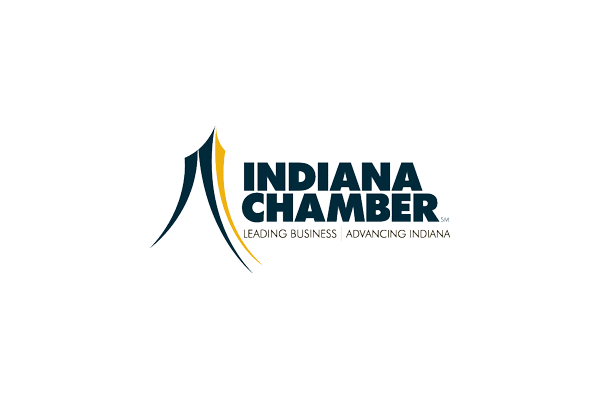Southern Indiana Business Report
INDIANAPOLIS — Hoosier business leaders are beginning to wrestle with some of the same challenges they had before they knew what COVID-19 was. And in some cases, those challenges have only grown. That’s the sentiment from the 14th annual employer workforce survey from the Indiana Chamber of Commerce and its Institute for Workforce Excellence.
“One of the biggest takeaways from the survey is that we’re back where we were in 2018 in terms of employers saying the talent supply isn’t where it needs to be,” says Jason Bearce, Indiana Chamber vice president of education and workforce development. “In the summer of 2021, nearly three-fourths of employers say the supply of employees doesn’t meet their needs.”
That number is up from 50% last year at the height of the pandemic. Moreover, 62% of employers said meeting their talent needs was among their biggest challenges, with 21% saying it was their top challenge. Both numbers are at their highest point in the past three years.
There are several reasons for lack of qualified employees. “A hesitancy by some to rejoin the workforce is no doubt one and job changes another,” Bearce notes. “A positive take on this finding is that it could signal an economic rebound or expansion on the horizon with more workers in demand as employers ramp up for growth.”
Nearly 60% of companies surveyed said they have left jobs unfilled due to under-qualified candidate pools. That’s up from just more than 45% last year. Notably, 2018 was the first year more than half of the respondents left jobs unfilled due to underqualified applicants. The 51% total that year marked the fifth consecutive increase, starting with 39% in 2014.
When it comes to how employers deal with the talent shortage, the survey shows there’s a push both toward retraining workers and a reliance on automation.
More than a quarter (26%) of Hoosier companies said they are retraining employees due to the deployment of new technology – that’s up 8% over 2020.
There was a 10% year-over-year jump in the number of companies that said they are automating job functions formerly done by employees. It now stands at 20%.
More employers are also utilizing current employees to perform additional job duties – nearly 56% noted this approach as compared to 43% in 2020.
A smaller, yet still increasing, number of companies reported handling jobs formerly done by employees with artificial intelligence (AI)-driven machines, which essentially can learn from past experiences. The percentage of companies in the survey that took that step tripled year-over-year to 6%.
Bearce points out the automation and AI trend also could be cost-saving measures.
The survey does have some silver linings. Almost 60% of the companies in the survey (58%) said they intend to grow their workforce this year.
The most likely pay range of added jobs will be in the $30,000 to $50,000 range (71%). Nearly 50% of employers said they would “more likely” add employees earning above $70,000 – 30% between $70,000 and $90,000, and 18% exceeding $90,000. Another 41% of companies surveyed said they would “more likely” add new hires at less than $30,000 per year.
An encouraging trend shows that Indiana businesses (64%) are investing more in employee training and allowing employees more time to train.
Nearly 57% of the survey’s respondents said they offered training to retain employees while 29% said it was done to replace retiring skilled workers and another 13% said it was to save on recruitment costs.
Pay and training aren’t the only thing on workers’ minds these days.
Bearce says that employers are “coming to grips with the fact that attracting and retaining workers in today’s economy is about much more than offering a competitive compensation package.
“The types of benefits and wraparound support sought by workers are much different in a post-pandemic labor market,” he explains. “Some of the shifts we’re seeing simply aren’t going to go back to the way they were pre-COVID, and Indiana companies will have to make the adjustment.”
A new survey question asked what outside factors most negatively impacted attracting and retaining workers. Insufficient childcare, housing and transportation were the top three items cited.
“We keep hearing more and more about these barriers in nearly every workforce discussion, especially the availability and affordability of childcare and housing,” Bearce says. “It’s become a serious problem across Indiana, and it’s raised questions about the role employers are expected to play in meeting these needs for their employees. At the end of the day, it’s pretty clear that businesses that want to grow and attract top talent have to be part of the solution.”
The 2021 Indiana Chamber survey was conducted in late summer and completed by 905 employers in various industries throughout the state. Full results are available at www.indianachamber.com/survey.
The Indiana Chamber’s Institute for Workforce Excellence is dedicated to helping businesses attract, develop and retain skilled employees by bringing together tools and resources to assist in building that talent pipeline. The Institute’s scope is being expanded to fill existing gaps in the workforce system for both employers and employees. A key piece, Bearce emphasizes, is the Indiana Talent Resource Navigator, which will be launched in early 2022.
“The Talent Resource Navigator will be available to anyone with an interest in maximizing the potential of individuals in our state’s workforce. It’s a web-based tool supported by Indiana Chamber staff that intentionally guides and connects employers and individuals with vetted partners, best practices and programs tailored to meet specific workforce needs.”



